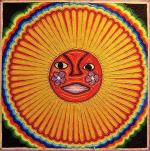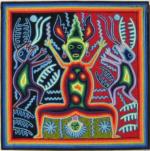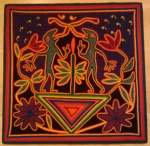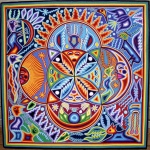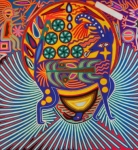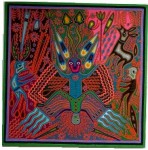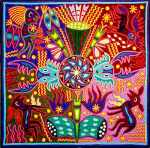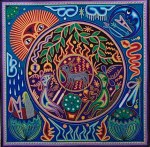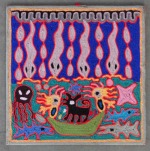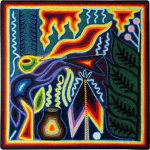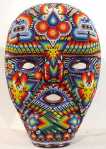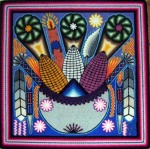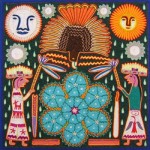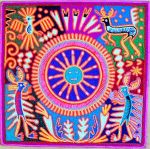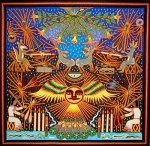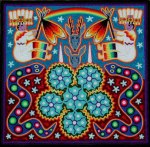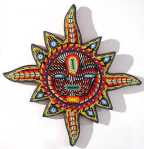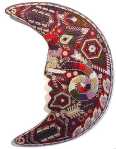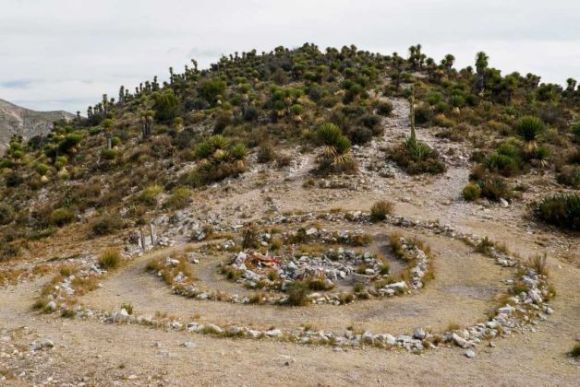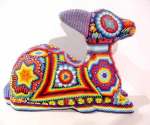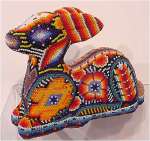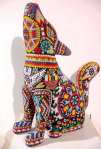Huichol yarn painting is a traditional artistic technique that is used for recording dreams, visions, myths, and the innermost personal prayers of the artists. Because the Huichol language is non-written, these story boards are used to express the beauty and wisdom of the ancient Huichol cultural tradition. Huichol artists can be thought of as modern day scribes.
The Huichols use smaller version of these paintings as offerings to the many gods and goddesses that reign over their isolated homeland in the Sierra Madre mountain range in Mexico.
Yarn paintings originate from votive objects the Huichols create as ceremonial offerings. The small wax and yarn votive objects are made as prayers to depict the desires of the people and their families. After the ceremonies they are taken to far off sacred places and left for the gods and goddesses.
The larger paintings, made by Huichol artists for sale, utilize the same technique for placing strands of yarn onto a thin surface of beeswax mixed with pine resin that has been spread onto a wooden board. It is a meticulous and time consuming art form that may be a successor to the featherworking techniques of the Huichol ancestors, the Aztecs.




